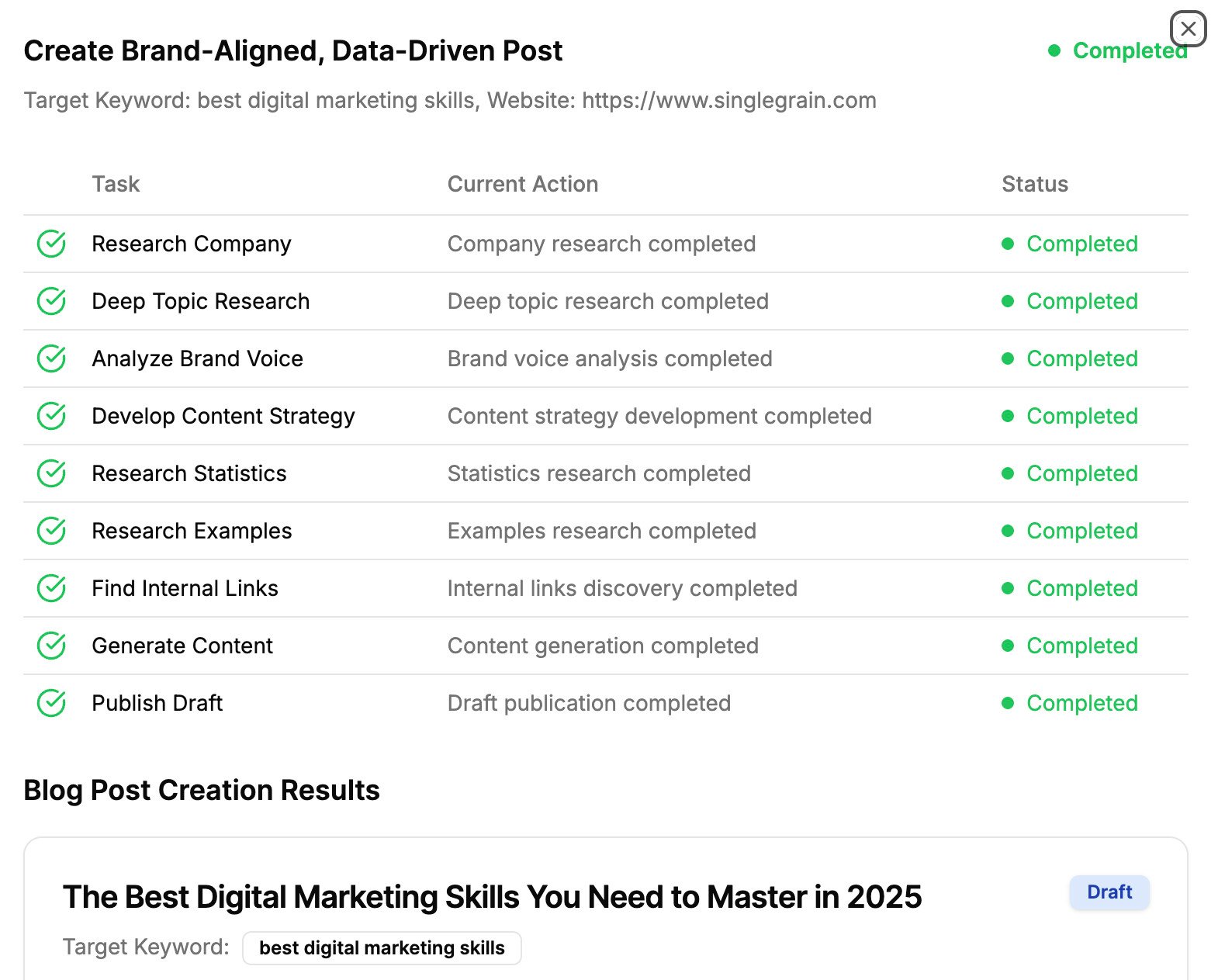Navigating B2B sales is challenging without the right technology. Fortunately, professionals who use account-based marketing (ABM) have numerous platforms and tools to choose from.
Two of the biggest contenders on the market are Demandbase and 6sense. These platforms aim to target B2B buyers better and nurture them down the sales funnel.
However, both platforms have differences. Demandbase and 6sense have varying features and target leads in their own ways, and both platforms may be better for some campaigns than others.
This Demandbase vs 6sense guide examines the strengths and weaknesses of these platforms, helping you decide which best suits your business goals and budget.
Key Takeaways on Demandbase vs 6sense
- Demandbase and 6sense are two of the most advanced account-based marketing platforms.
- Both platforms offer impressive features like intent data collection, account targeting, and personalization.
- Before choosing a platform, organizations must gauge each tool’s user-friendliness, pricing, and integrations.
- Demandbase is better for organizations that need flexible ABM solutions with a focus on account intelligence, while 6sense is best for AI-powered tools like predictive analytics.
TABLE OF CONTENTS:
Understanding Demandbase vs 6sense
Before comparing the two platforms, let’s briefly introduce them and better understand what both technologies offer.
Demandbase
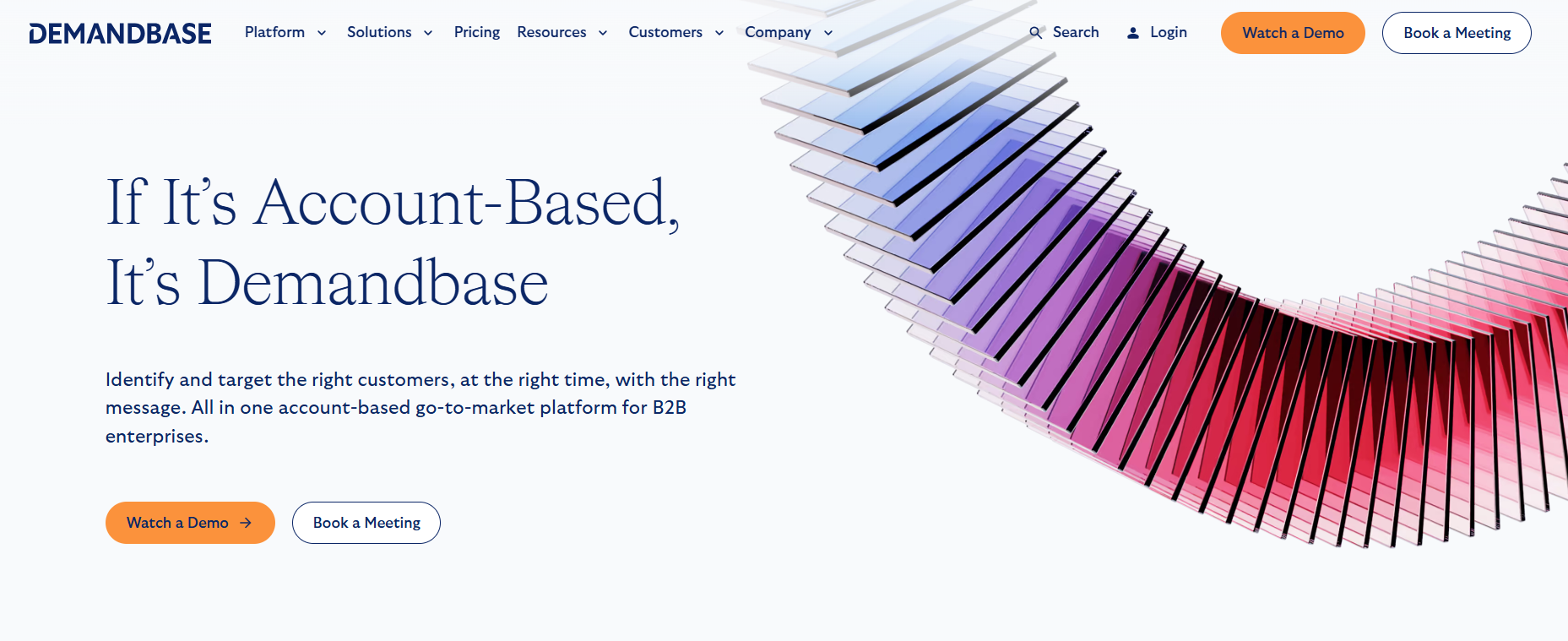
Demandbase’s goal is to emphasize “account intelligence.” Account intelligence combines your CRM data and sales and marketing efforts and reflects it to the technographics, firmographics, business contacts, and purchase intent listed in your ideal customer profile (ICP). Demandbase will use this data to accelerate your ABM automation.
Known for its robust ABM capabilities, Demandbase offers an end-to-end solution that includes intent data, account targeting, and personalization tools.
Your sales and marketing teams can collaborate on tasks in one place, and Demandbase offers data-driven insights for both tactics. Demandbase always updates its intelligence model to ensure you have the most robust ABM strategy. This platform integrates with many popular technologies like TechTarget, Adobe, Drift, Google Analytics, HubSpot, and Salesforce.
6sense
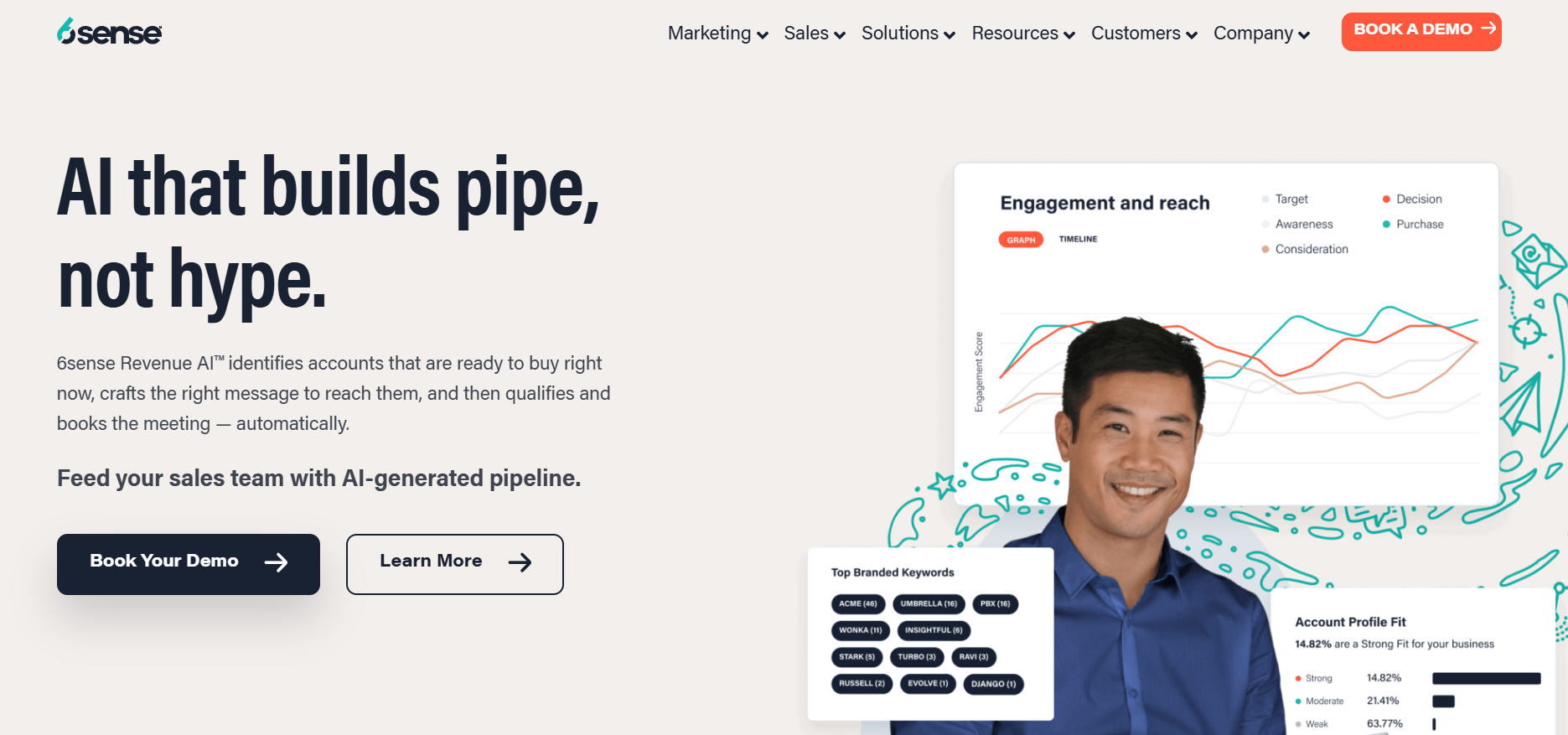
6sense was one of the first AI-powered ABM technologies. It was formed in 2013 and today is worth $5.2 billion. Some of its biggest clients include Salesforce, Microsoft, and Adobe.
This is an all-in-one ABM platform that hones in on the sales pipeline. Organizations can use 6sense to identify accounts based on firmographics, use that data to segment accounts, better target accounts individually or in groups, and personalize advertising and marketing efforts.
Marketers can integrate 6sense into various third-party platforms, like Uberflip, TrustRadius, and Outreach, to analyze customer data and track how they interact with your website and marketing materials.
From there, 6sense can generate actionable insights to reach accounts better. This helps organizations get a more precise snapshot of the customer journey to deliver personalized content and communications. All this allows leads to enter the buyer pipeline and brings them one step closer to converting.
Aimed at empowering revenue teams, 6sense leverages artificial intelligence (AI) and predictive analytics to uncover hidden buying signals, prioritize accounts, and optimize the buyer journey.
Key Features Comparison
Both platforms have robust features to target your accounts better. But which tool has the most extensive uses?
Intent Data
Intent data helps you understand which accounts are actively researching topics related to your products and services. How do these tools use intent data?
Demandbase
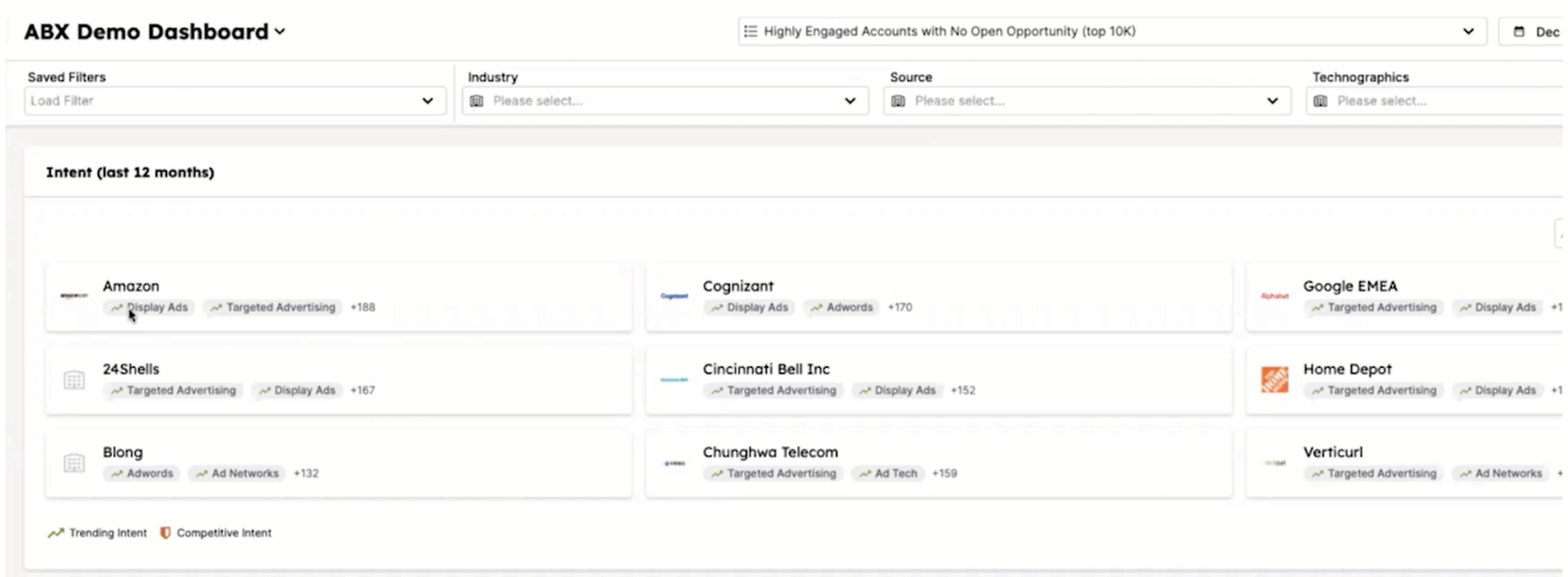
Source: Demandbase
Demandbase integrates its proprietary intent data with third-party data sources to provide a comprehensive view of account interest. Its AI-powered “DemandGraph” enables marketers to identify accounts showing strong buying signals, assisting with crafting better-targeted advertising and marketing campaigns.
6sense
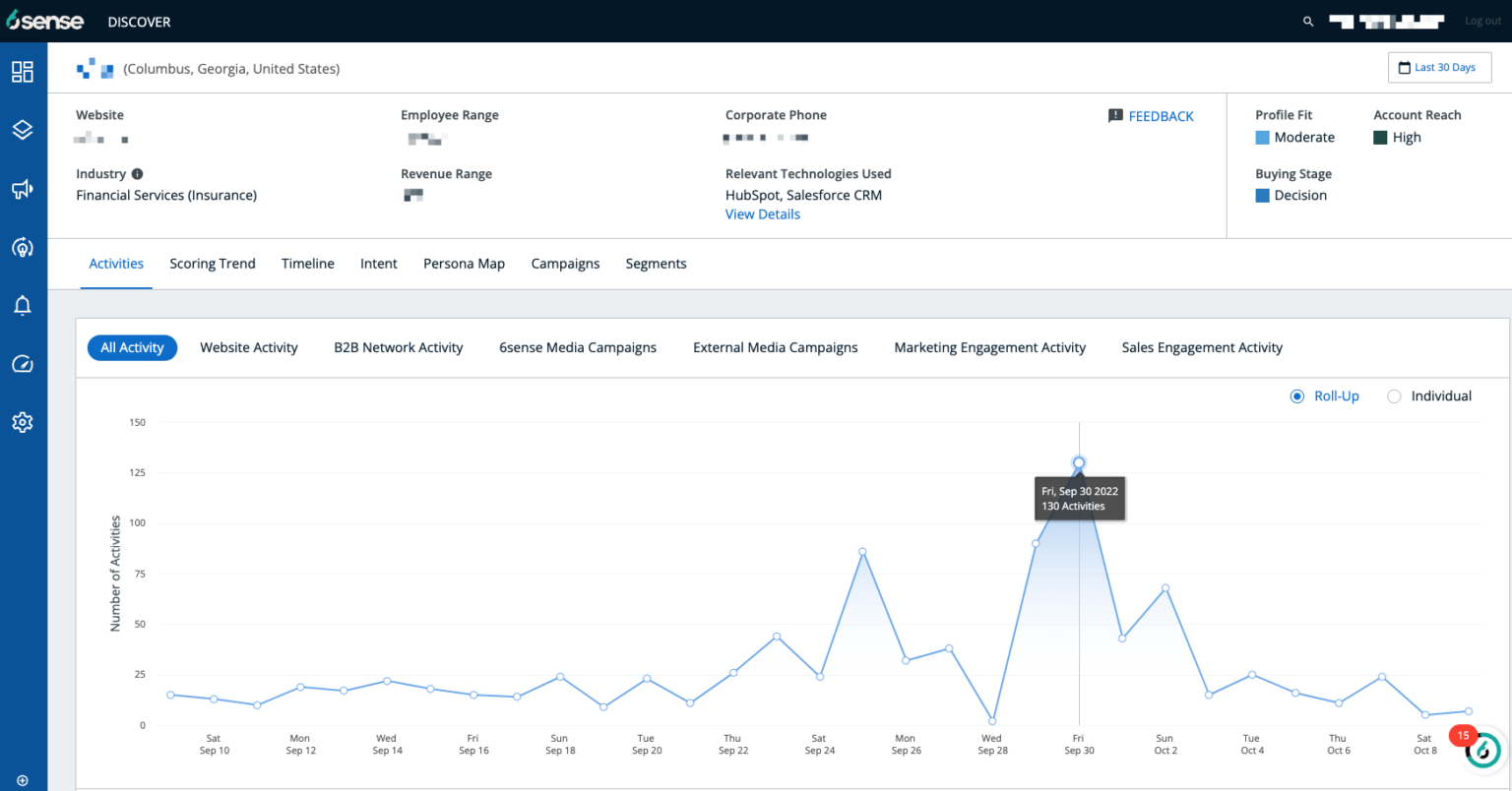
Source: Alyce
6sense excels in intent data by using AI to analyze millions of behavioral signals from web activity, content engagement, sales efforts, and email responses. It segments individual accounts and uses real-time data to pinpoint where they are in their buying journey.
6sense also uses predictive analytics and deep insights for lead scoring, highlighting leads by specific colors whether or not they’re ready to buy. This ensures sales teams can identify high-priority leads and focus their efforts on them. 6sense also uses intent data to highlight which decision-makers marketers should target and how to tailor their campaigns to fit their needs.
Winner
Both platforms are strong, but 6sense’s predictive analytics provide an edge for businesses prioritizing the buyer journey.
Account Targeting
Accurate data targeting ensures marketing efforts are directed toward the most promising accounts. Both platforms can collect extensive data types for more precise targeting. But which one does account targeting better?
Demandbase
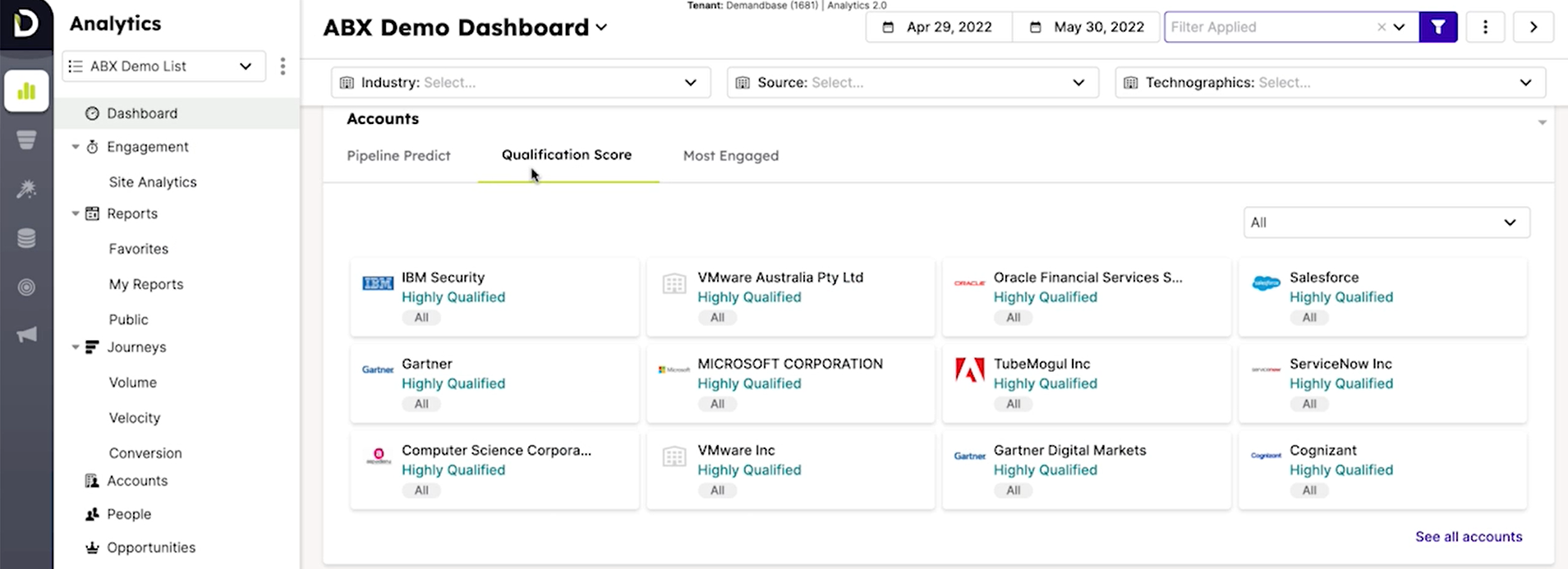
Source: Demandbase
Demandbase offers advanced account targeting using predictive models. It enables dynamic prioritization based on account size, industry, and engagement levels.
Once you find your accounts, Demandbase uses lead scoring to gauge where your accounts are in the sales pipeline. From here, Demandbase uses predictive models to uncover future buying behaviors and recommend future actions. Organizations can use customizable segmentation to better organize programmatic and strategic ABM campaigns and target accounts in clusters.
6sense
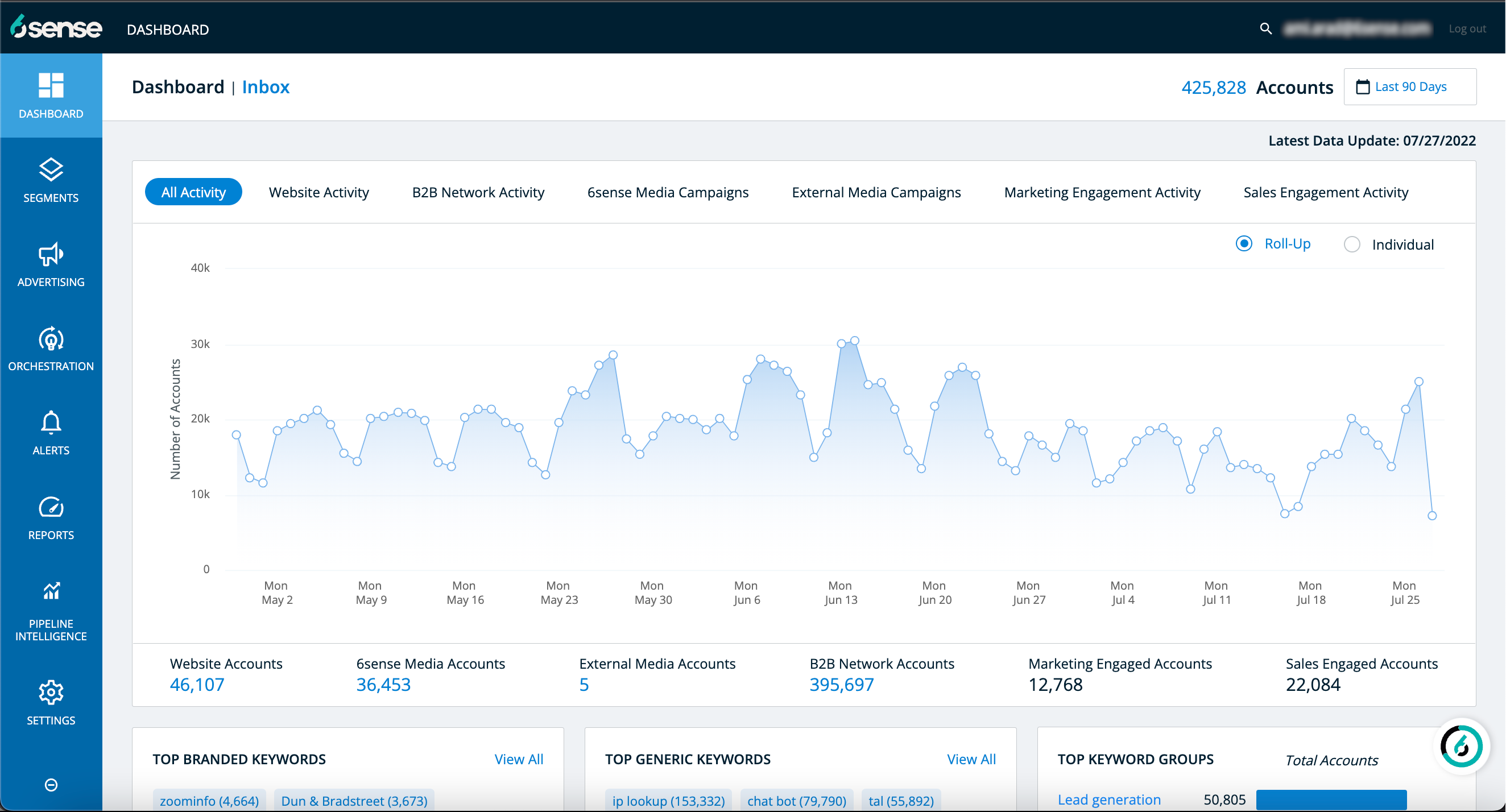
Source: Capterra Australia
Since 6sense has more enterprise solutions, its system is tailored more to programmatic ABM and offers customizable segments.
However, 6sense takes targeting a step further by using AI and predictive capabilities to deliver insights and recommendations. It predicts account behavior and analyzes past buying behaviors to suggest the best outreach action. The AI-driven prioritization ensures your team focuses on accounts that are ready to make a purchase.
Winner
6sense stands out with its predictive capabilities, making it ideal for organizations that want to engage potential customers.
Personalization
ABM thrives on personalized messaging tailored to each account’s needs. Both tools offer deep insights into their accounts and how to personalize various marketing and advertising strategies for them. But which tool provides the most accurate insights and personalization capabilities?
Demandbase
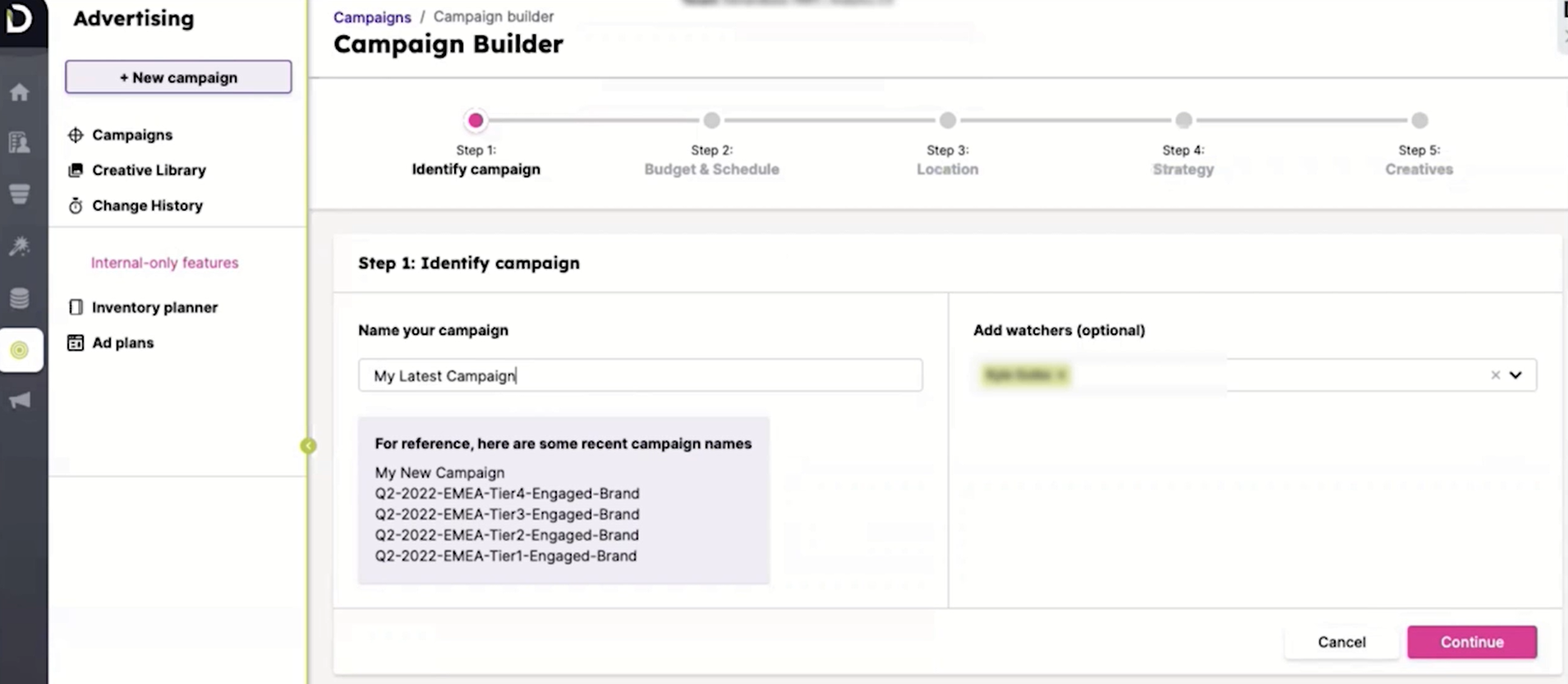
Source: Demandbase
Personalization is one of Demandbase’s key features. Demandbase analyzes large datasets and signals to understand and predict buying behaviors.
Their campaign builder allows marketers to create custom web and advertising experiences for target accounts, adapting content based on industry, company size, annual revenue, or previous interactions. Demandbase integrates with apps like LinkedIn and Gmail so that you can scale all marketing strategies.
This platform is also the best option for brands targeting global accounts. This platform recognizes keywords and data signals in 133 languages to support multi-lingual marketing and advertising personalization.
6sense
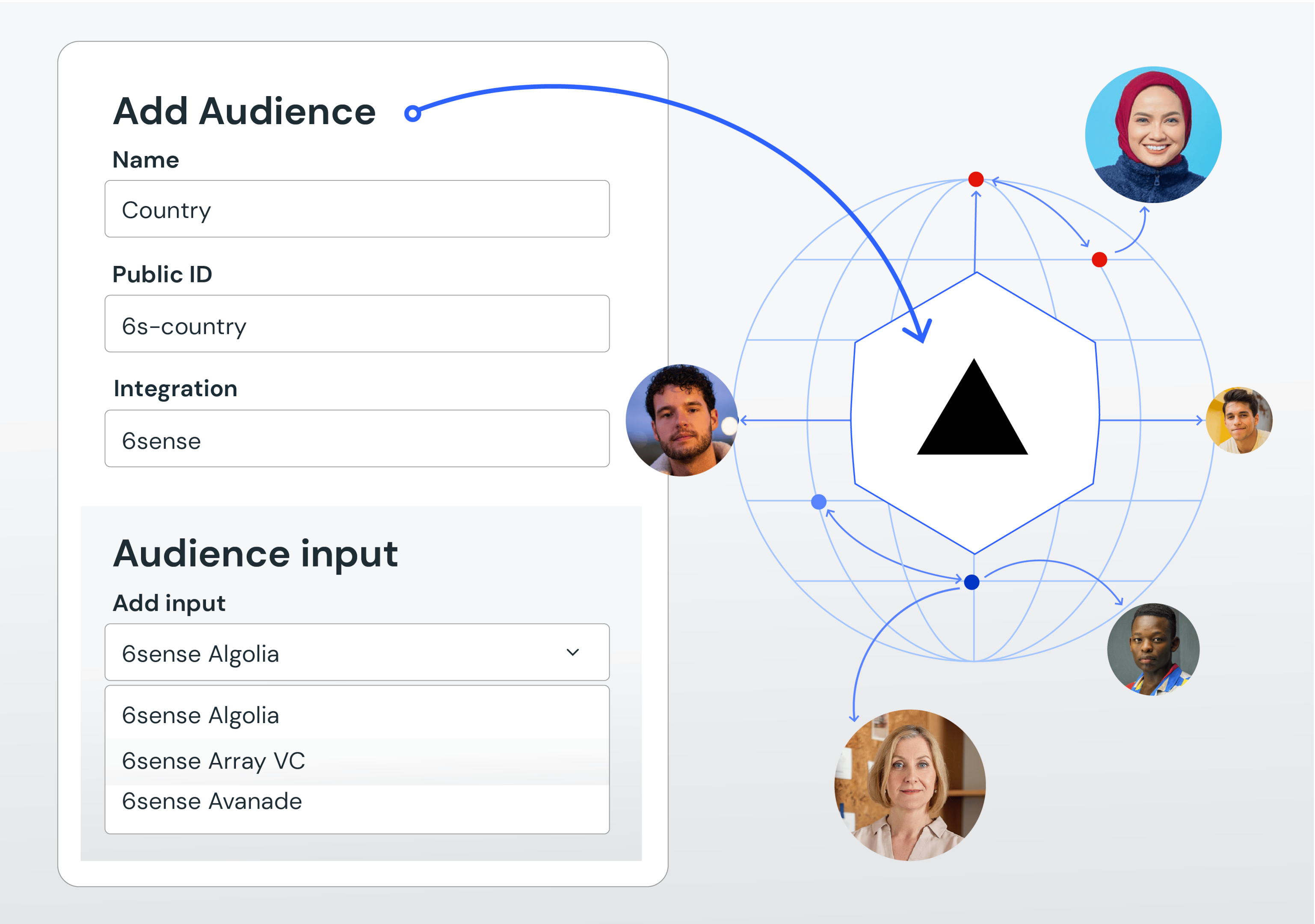
Source: Uniform
Since 6sense is more of an AI-powered ABM platform, marketers should use third-party integrations like Uniform to personalize content and messaging to segmented accounts. Fortunately, most programs can offer personalization tools based on firmographics like country, industry, and audience type.
Though 6sense focuses heavily on predictive analytics, it also supports personalization by guiding teams on messaging strategies. This helps marketers produce relevant content that assists your accounts in the buyer’s journey.
That said, these strategies are better for marketers using programmatic ABM. Since 6sense is known for its segmentation features, marketers can group these accounts based on shared information and interests to market to them as a cluster.
Winner
Demandbase is the clear winner for companies prioritizing sophisticated and scalable personalization.
Integrations
Integrations facilitate many tactics, such as advertising and targeting. Which platform offers the most impressive integrations?
Demandbase
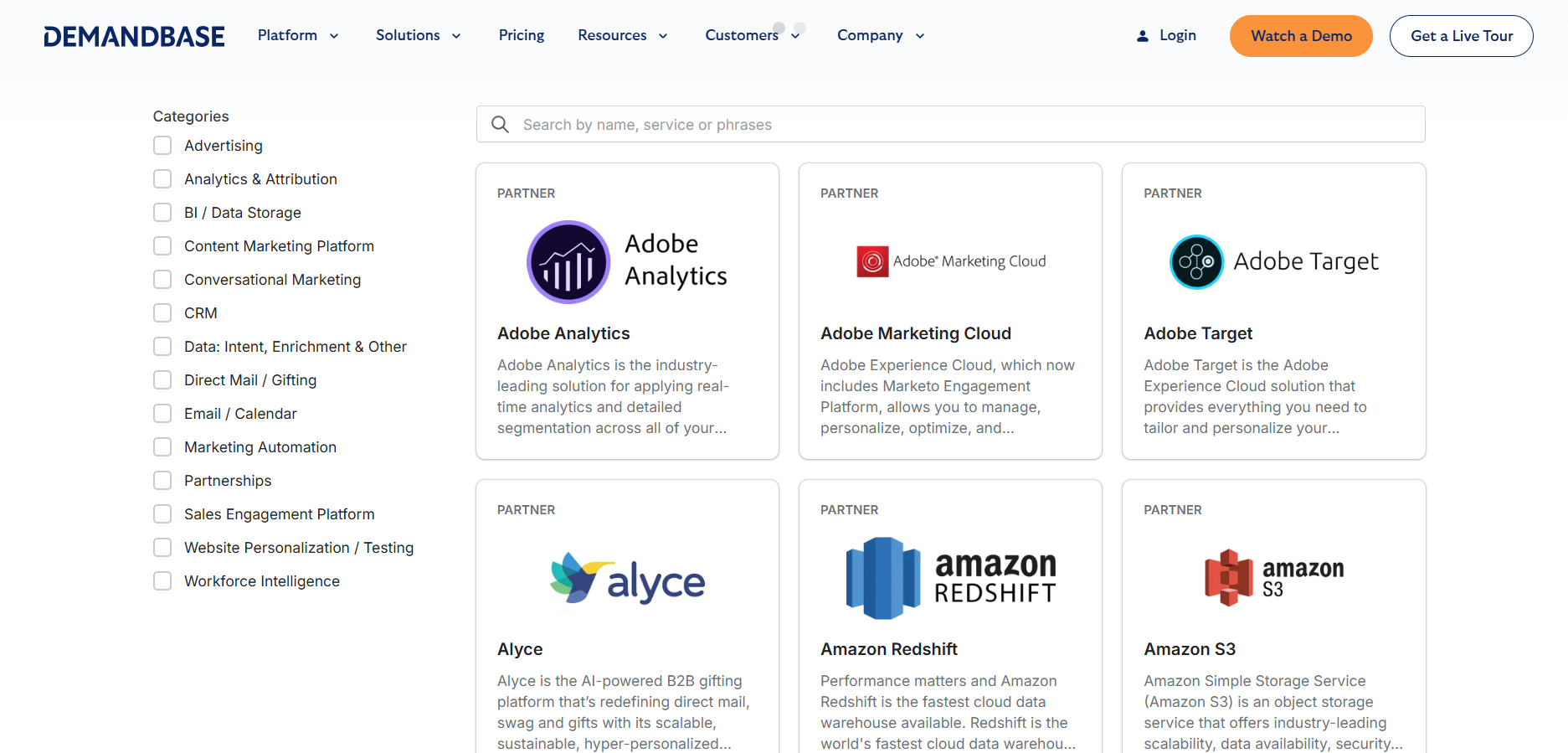
Demandbase offers integrations with popular CRMs like Salesforce, HubSpot, and Microsoft Dynamics 365. This makes it easier to import customer data and better target new accounts. Demandbase also integrates with marketing automation platforms, like Marketo, Adobe Marketing Cloud, and Oracle Eloqua.
If you want to align your ABM strategy to your sales funnel, Demandbase supports integrations with Outreach and SalesLoft.
Finally, Demandbase supports integrations with analytics tools like Google Analytics and Adobe Analytics to better track your leads and how they interact on your website.
You can view all of Demandbase’s integrations on its website. On the left-hand side, sort through the different categories.
6sense
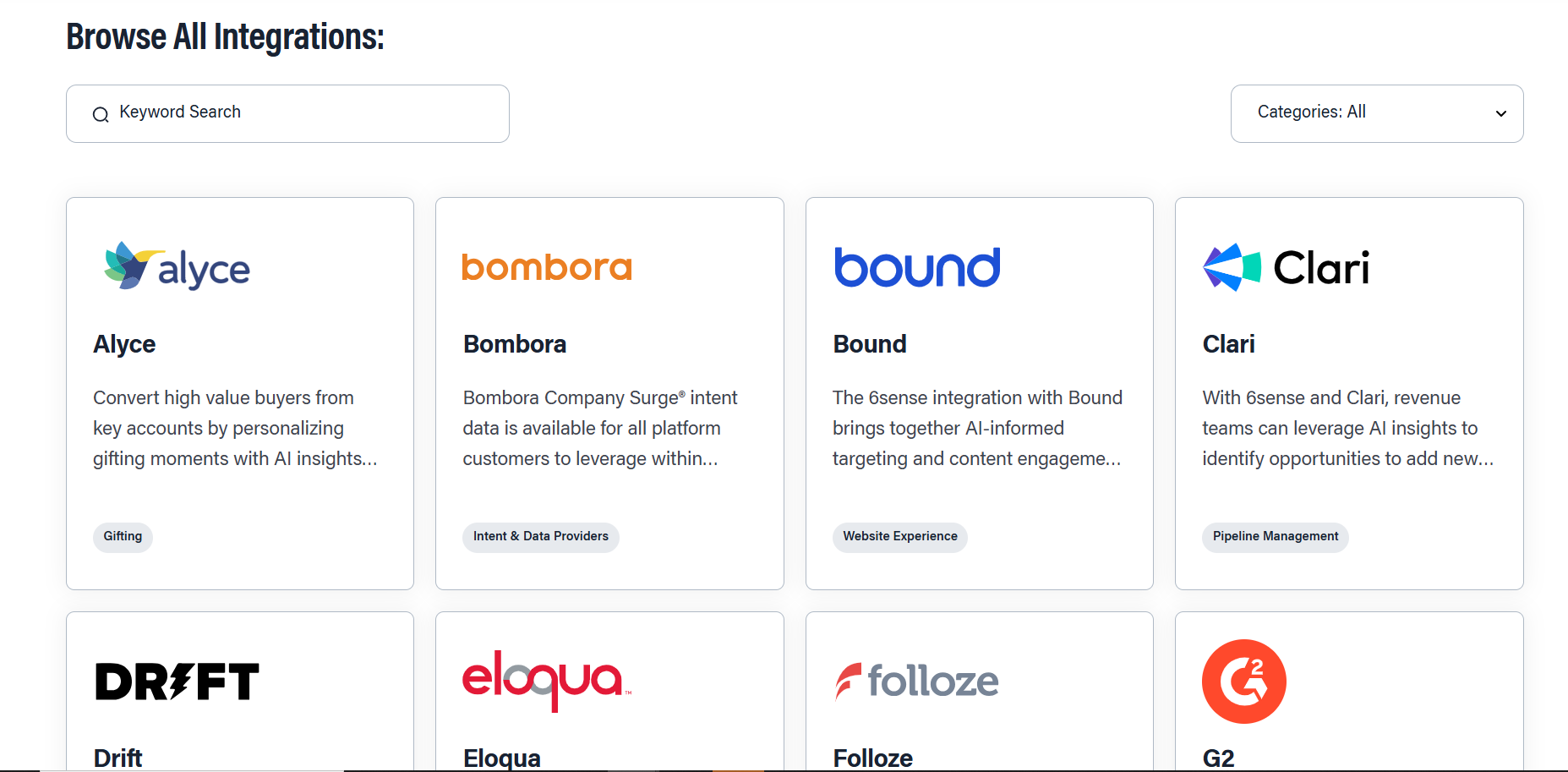
Like Demandbase, 6sense integrates with major CRM and marketing platforms like HubSpot and Marketo and connects to sales engagement tools like Outreach and SalesLoft.
However, 6sense focuses most of its integrations on comprehensive insights. For example, 6sense also integrates with TrustRadius and TechTarget. You can view 6sense’s integrations on its website, search for specific tools, and filter by category on the top right.
Winner
6sense edges out Demandbase with broader data and analytics integrations, making it a better fit for teams wanting more accurate insights into their accounts.
User Experience
While the features may be impressive, user experience and an intuitive platform often win for many people. So, which ABM platform is the most user-friendly and easy to learn?
Demandbase
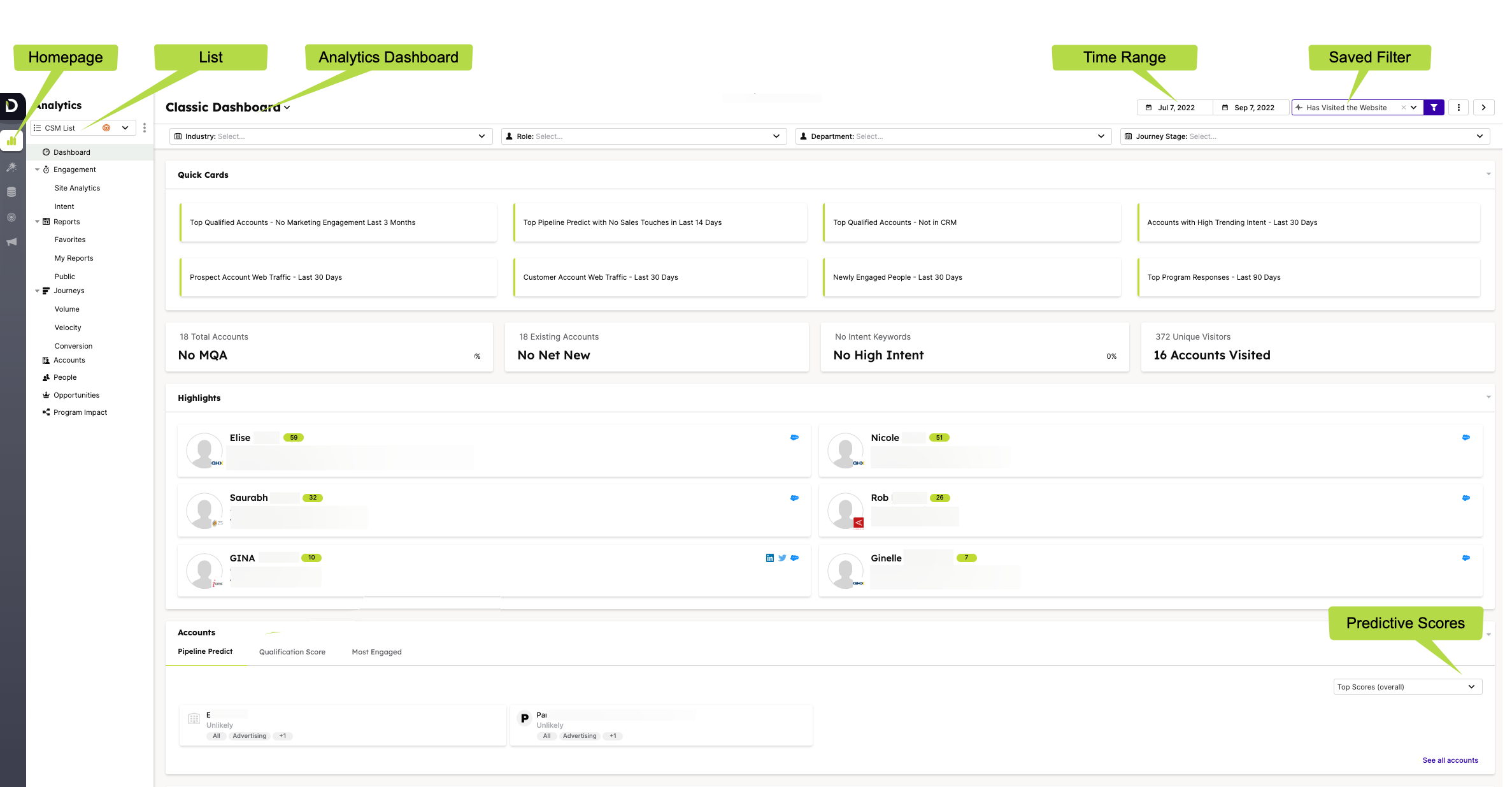
Source: Demandbase
Demandbase’s interface is intuitive, with a straightforward dashboard that’s easy to navigate. Users often praise its simplicity and well-designed workflows. Demandbase also stands out because its backend allows many customizations and advanced account targeting features.
That said, if you’re new to ABM, it does come with a learning curve. If you run into any issues, Demandbase has an Academy that is free to all subscribers. Users can also take advantage of their customer service and the Community board.
6sense
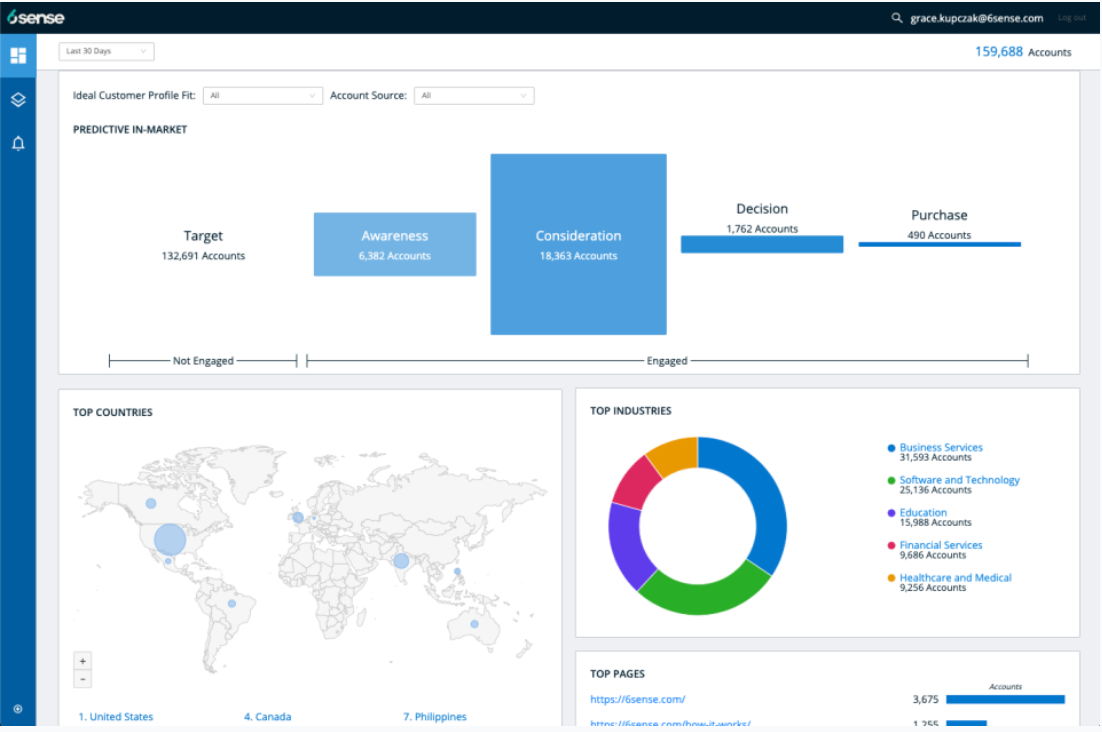
Source: Software Advice
6sense is excellent at offering a snapshot of your accounts and where they are in the buying process. Their sales funnel visualizations are extremely user-friendly; organizations can see how many accounts are in each part of the buyer’s journey, the industries they’re attracting, and where their accounts are located.
6sense also shows which web pages are most popular and have a better chance of converting accounts.
However, 6sense is designed for enterprises and has a steeper learning curve. The depth of its AI and analytics tools may overwhelm new users, but its capabilities are highly valuable once mastered. It may be too complex if you only run a strategic or ABM lite campaign. That said, you can still get help by using their 6sense for 6sense resource and contacting their customer service.
Winner
Demandbase wins for ease of use. While it still comes with a learning curve, customers new to ABM platforms can conduct training on their Academy, join their Community board, or contact customer service.
Pricing
While account-based marketing drives a higher ROI than other strategies, using ABM tools requires a steep investment. So, which platform is the most budget-friendly?
Demandbase
Demandbase offers individual pricing based on feature needs, which can appeal to organizations that don’t want to pay more than they need. However, Demandbase has higher rates than the competition, and your plan’s price can rise quickly if you add more team members or advanced features.
6sense
Like Demandbase, 6sense offers an individual price based on the features you need and the number of team members you’ll support.
6sense is known for its premium pricing. While it delivers robust capabilities, it’s often more suited for mid-sized to enterprise-level businesses with larger budgets. That said, 6sense’s higher-tiered plans are roughly the same price as Demandbase’s.
Winner
Demandbase is the better option for organizations that want more flexibility in their plans and pricing, while 6sense is ideal for organizations willing to invest in cutting-edge AI tools.
Who Should Choose Demandbase?
Demandbase is an excellent fit for companies looking for powerful targeting and personalization capabilities for individual accounts.
This platform has many powerful marketing and advertising features and supports integrations to numerous tools that enhance ABM campaigns. Demandbase also has impressive features, such as Real-Time Intent. According to a case study, Adobe increased visitor-to-lead conversion rates by 3x using Demandbase.
If you’re unsure about choosing Demandbase, here are some other signs that this platform is right for you.
- Need flexible ABM features and solutions.
- Require advanced personalization capabilities.
- Focus on strategic ABM or ABM lite.
Industries like technology, professional services, and mid-sized businesses often find Demandbase aligns well with their needs.
Who Should Choose 6sense?
6sense is one of the most powerful ABM tools on the market. It’s driven by many AI technologies, like predictive analytics and big data, to identify accounts and improve marketing for increased revenue.
6sense also offers competitive solutions, such as real-time visibility into account engagement. This platform also supports multiple integrations with various tools to enhance your ABM campaign. In a case study, 6sense increased Ceros’ meeting-to-SQL conversions to over 72%.
You should also use this platform if any of the following applies to you:
- Need advanced AI-driven analytics and predictive insights.
- Want deeper sales and marketing alignment through integrated tools.
- Are mid-sized or enterprise-level businesses with the resources to maximize the platform’s potential.
Companies in sectors like enterprise software, manufacturing, and finance often benefit from 6sense’s forward-looking capabilities.
Demandbase vs 6sense: Which Is the Better Option?
Demandbase and 6sense are powerful ABM platforms that cater to different needs. Demandbase is the go-to option for those seeking simplicity, affordability, and personalization. On the other hand, 6sense shines for companies looking to leverage cutting-edge AI and predictive analytics for more intelligent account identification and targeting.
That said, one platform isn’t better than the other. To ensure you choose the best tool, evaluate your organization’s objectives, resources, and training to select the platform that will drive the highest ROI. With either choice, your ABM strategy will gain the tools to deliver measurable results.
Businesses also have another option: partner with an ABM marketing firm. Professionals can gauge your industry and products/services to help you identify the best accounts to target. The best ABM firms use these tools for more accurate insights and strategies.
If you’re ready to level up your account-based marketing strategy, Single Grain’s ABM experts can help!👇
Related Video
For more insights and lessons about marketing, check out our Marketing School podcast on YouTube.
Frequently Asked Questions About Demandbase vs 6sense
-
What's included in an ABM strategy?
An ABM strategy targets high-value accounts with various tactics. Here’s what a comprehensive ABM strategy includes:
- Ideal customer profile (ICP)
- Account selection
- Personalized content and messaging
- Multi-channel engagement
- Sales and marketing alignment
- ABM tools
-
What are some other popular ABM tools?
Additional ABM tools include:
- Terminus
- Rollworks
- Engagio
- ZoomInfo
- Triblio
- Madison Logic
- PathFactory
-
Is using ABM tools worth my time?
ABM tools can be incredibly valuable, but whether they are worth the investment depends on your business goals, target accounts, and the resources you already use.
-
What are the most essential features of an ABM tool?
When selecting an ABM tool, it’s crucial to prioritize features that align with your goals and help you perform key tactics in your strategy. In general, here are the most essential features to look for in an ABM tool:
- Account identification and targeting
- Intent data
- Personalization
- Multi-channel integrations
- Analytics and reporting
- Automation
-
What are alternatives to ABM tools?
If ABM tools are beyond your budget or don’t align with your current needs, you can use several alternatives and strategies to implement account-based marketing. Here are some alternative tools:
- CRM systems
- Marketing automation
- Project management tools
- Analytics software
- Advertising platforms
- Email marketing tools
- Social media platforms
- Collaboration tools
- Content marketing technology






